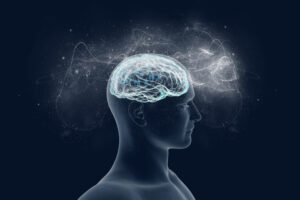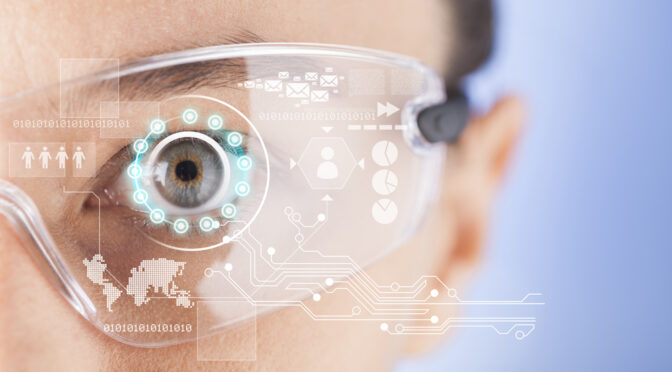Development, Age and Intelligence
In the cognitive sciences and developmental Psychology, intelligence is pretty much tied to cognitive development of a human as he or she ages. Learning is seen as depending upon attention, memory and conceptualizing the world around us. How well or how poorly we perform these three tasks is reflected in our learning abilities and partially our intelligence.
In Neuroscience, for instance, intelligence and learning are understood in terms of how the billions of neural connections in our brain interact, cluster and regenerate. For some time it has been believed or theorized that neurons die as we age, meaning that our mental faculties are disparaged with age.
This assumption has been corrected and revised and now we know that neuron cells do not die or decrease in number as we age. What happens is that the synapses (connections between individual cells) and the neurotransmitters, the chemicals used to send messages along the neural ‘learning pathways’, change as we get older.
This being said, however, we are still able to keep our mental performance on top gear even past our seventies or eighties unless we are not afflicted by degenerative mental conditions such as Alzheimer’s disease or dementia (although this is on the decline as Danish studies show). The point is that our mental alertness, memory, focus and reasoning can not only be maintained to perform as good as our best years but even improved.
There are countless examples and stories of people who have maintained optimal mental acuity in their later years, or better still kept on learning and improving on their mental skills as they aged. One example is 93-year old track athlete Olga Kotelko who had her brain analyzed by the Institute for Advanced Science and Technology of the University of Illinois and found that her cognitive test responses were decisively much higher than cohorts in her age group.
So the question is what are the factors that determine how our intelligence decreases, is maintained or even increased?
Food for Thought
Over the last few decades, researchers and practitioners have been finding closer relations between our diet and our mental life. It is somehow obvious that we are what we eat and the food we put in our bodies affects our health, not less our mental health, performance and agility.
Moreover it is becoming more evident that the best way to improve your mental health is through your guts. Psychiatrist Drew Ramsey, MD, an assistant clinical professor at Columbia University says “…diet is potentially the most powerful intervention we have. By helping people shape their diets, we can improve their mental health and decrease their risk of psychiatric disorders.”
Here are the top five foods (according to widest consensus among researchers) that are regarded to boost mental acuity or positively affect mental health, notably preventing common problems such stress, anxiety and depression:
Fatty-Fish: Everyone knows nowadays that fatty cold water fish such as Salmon, herrings, sardines and mackerel are rich in Omega-3 fatty acids such as DHA and EPA. Other sources include seaweed such as Kelp, and flaxseed. Studies have shown how these food sources have an effect on the synapses and neurotransmitters in the brain, including serotonin and dopamine, two important chemicals that keep mood balance and maintain long term memory and learning.
Whole Grains: The complex carbohydrate molecule chains in whole grain foods release glucose more gradually in the body and thus sustain energy to the brain and body for a longer time. In contrast simple carbohydrates produce spikes in glucose levels, giving a short burst of energy followed by a dip in sugar levels and in mood and mental energy.
Proteins: Amino acids in proteins such as Tryptophan is metabolized in the brain into serotonin, nicknamed the natural ‘Prozac’ of the brain and which is responsible for reaching symptoms of depression and anxiety, both of which negatively affect cognitive function and intelligence.
Leafy Greens: Greens with dark leafs such as spinach, romaine, turnip, etc, are high in folic acid while Broccoli contains selenium. Deficiencies in these minerals and vitamins are linked to higher rates of mental fatigue and depression.
Yogurt & Probiotics: Yoghurt with active cultures such as Kefir contain probiotics, health bacteria shown to reduce anxiety and stress and affect the neurotransmitter GABA.
Nootropics – The Holy Grail of Mental Health Supplements?
Over the last few years, more public attention has been given to so-called Nootropics, or in other words, non-prescription drugs and supplements designed to aid mental performance and improve mood and sleep.
 The democratization of the markets and online sales distribution has made such Nootropics available to everyone at low cost. Thus, where once they were just a health supplement exclusive to top CEOs or well connected people, now any adult can buy high quality Nootropics over the internet for under $50.
The democratization of the markets and online sales distribution has made such Nootropics available to everyone at low cost. Thus, where once they were just a health supplement exclusive to top CEOs or well connected people, now any adult can buy high quality Nootropics over the internet for under $50.
People are getting more interested in Nootropics for a variety of reasons. First and foremost, it’s because some Nootropics can be a very powerful aid to mental performance – increasing focus, attention, memory recall and mental clarity. This is of particular interest to people who suffer from chronic fatigue, low attention spans or some other problem that affects their mental acuity.
Secondly, Nootropics are also widely used by people who want to keep sharp and at pace with demanding lifestyles or put simply, just want to be smarter – as in remembering facts and words more promptly or being able to digest and assimilate information better due to higher concentration and focus.
Some of the most popular Nootropics are:
Adrafinil: revered as giving full wakefulness, attention to detail and high mental focus without the jittery effect or crash effect of caffeine or amphetamines.
Noopept : Memory & clarity – Strongest of the Racitam family – 1000x stronger than Piracetam
Huperzine A: improves memory and Neurogenesis – prevents choline breakdown
Alpha GPC: improves memory – increase serotonin and dopamine levels in the brain
Neuro-Feedback Devices:
The rising star of all wearable technology these days has to be the EEG headband. EEG headbands are basically wearable headbands that have small sensors embedded which can read and measure your brain activity.
There has been a super fast evolution in this technology. Where once brain monitoring EEG devices where bulky and super expensive equipment owned by well funded institutes and laboratories, the same level of technology and results is now achievable through sleek and lightweight headbands you can carry around or wear anywhere without looking like a complete weirdo.
Although they can be applied in different ways such as for medical examinations, aid tools for professional therapists or personal development tools, the best known application of wearable EEG headband is Neuro-Feedback.
What this means is that you can get real time feedback of the state of mind you are in and this can guide you to change it accordingly such as, for instance, with learning how to relax or meditate. There is also another important application that has to do with brain training and mental performance. Some neuro-feedback devices nowadays come with apps in the form of games or exercises that can help you train your brain to improve performance.
The Next Decade at a Glance:
As we move through the next decade we will be seeing an evermore exponential advancement in both research and applied technology which have to do with the mind and intelligence. There are many promises held by research & development ventures – some take a long shot while others are almost already within reach.
One of the most widely discussed topics in popular science and futurology fora is the mind-body interface, or in other words, the capacity to plug your brain to a ‘computer’ and interact with it. The onset of this revolutionary technology is already with us at least in its seminal form.
 There are already Brain-computer-interface devices (BCI) that allow users to do basic tasks such as moving mouse pointers, opening and closing files, move a robotic arm, etc with the power of their thoughts.
There are already Brain-computer-interface devices (BCI) that allow users to do basic tasks such as moving mouse pointers, opening and closing files, move a robotic arm, etc with the power of their thoughts.
Recently we have also been seeing swift advancement in ‘brain implants’. In human subjects this has been for now successfully achieved in the form of ‘bionic eyes’ (optic nerve cells are connected to the brain) and scientists have arrived at a stage where they are able to implant ‘false memories’ in mice. These achievements can be a long shot away from full neural connection and the idea of augmenting your brain capacity by hundredfold but are bold and decisive steps in that direction.
Another big step forward in brain research is the exponential increase in brain scanning resolution. With brain scanning machines such as fMRIs, we are soon reaching a point of having a high resolution 3D scan of the brain in real time. What this means in very simple words, is that we would be able to understand how the brain (and intelligence) work in ways we couldn’t dream of before.
This would open up the flood gates for more medical research and applied technology to flourish in a new era where common mental conditions such as Alzheimer’s, anxiety disorders and depression would be a thing of the past. Moreover, this would give us the freedom to move forward from simply trying to fix problems to finding ways to use the highest potential of our intelligence and augment it through safe and ethical applications.
The Article was written by Gilbert Ross you can find him on Facebook, Twitter, Google+

